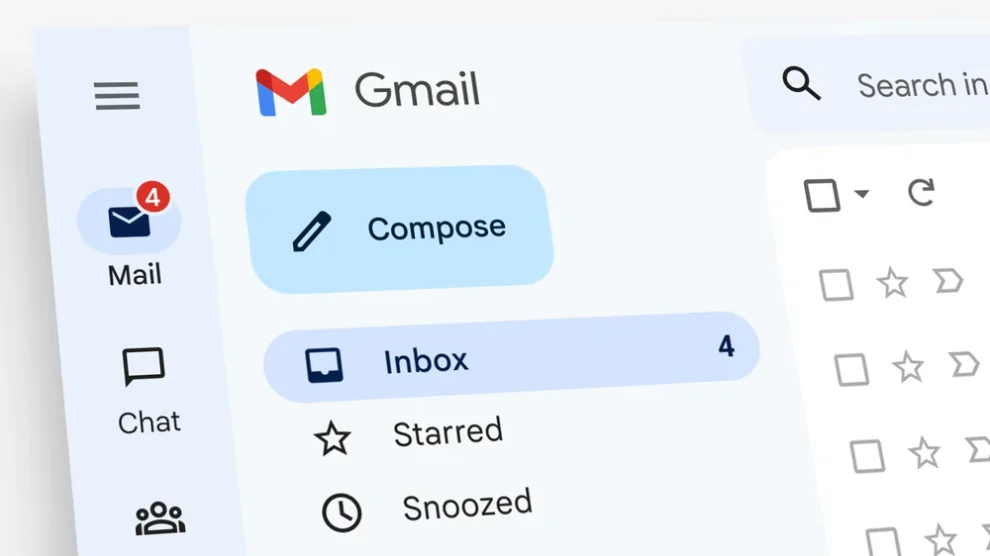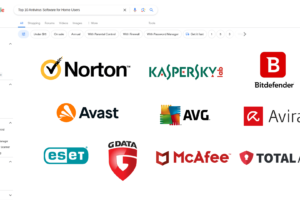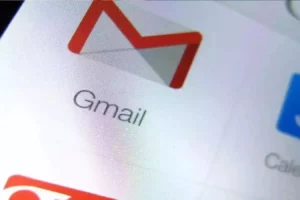Gmail, with its billion-plus active users, stands as a titan in this landscape. However, this ubiquity also makes it an attractive target for cybercriminals. A sophisticated new scam targeting Gmail users has recently emerged, catching even the most tech-savvy individuals off guard. This article delves into the intricacies of this scam, its potential impact, and crucial steps you can take to protect yourself.
The Anatomy of the Scam
The latest Gmail scam is a masterclass in social engineering, combining technical sophistication with psychological manipulation. At its core, the scam exploits a fundamental trust we place in our email systems – the assumption that messages in our inbox are genuinely from the senders they claim to be.
How It Works
- Spoofed Sender Address: The scammers use advanced techniques to create emails that appear to come from legitimate Gmail addresses. This isn’t your run-of-the-mill phishing attempt with obvious misspellings or suspicious domains. Instead, the sender’s address looks identical to a real Gmail account, often mimicking addresses of contacts in your address book.
- Familiar Content: The email’s content is crafted to seem like a natural continuation of a previous conversation or a plausible new interaction. It might reference shared experiences, mutual acquaintances, or ongoing projects, making it appear authentic at first glance.
- Embedded Malicious Links: Within the seemingly innocuous email body, the scammers include links that, when clicked, can lead to various malicious outcomes. These might include downloading malware, redirecting to phishing sites, or triggering hidden scripts that compromise your device or account.
- Urgency and Emotion: A hallmark of this scam is the creation of a sense of urgency or emotional appeal. The email might claim that immediate action is required to prevent a problem, or it could play on emotions like curiosity, fear, or excitement to prompt hasty actions.
- Bypass of Traditional Filters: Perhaps most alarmingly, these scam emails often slip through Gmail’s usually robust spam and security filters. This is achieved through a combination of technical tricks and by piggy-backing on the reputation of legitimate Gmail accounts.
The Technical Wizardry Behind the Scam

To understand why this scam is particularly dangerous, it’s crucial to delve into the technical aspects that make it so convincing.
Email Spoofing at Its Finest
The scammers employ a technique known as “email spoofing” to make their messages appear legitimate. This involves manipulating email headers to display a false sender address. While email spoofing isn’t new, the level of sophistication in this Gmail scam is unprecedented.
Traditional email systems use the Simple Mail Transfer Protocol (SMTP), which doesn’t have built-in authentication mechanisms. Cybercriminals exploit this vulnerability by altering the “From” field in the email header. In the case of this Gmail scam, they go a step further by carefully replicating the exact format and structure of genuine Gmail addresses.
Exploiting DKIM Vulnerabilities
Domain Keys Identified Mail (DKIM) is an email authentication method designed to detect forged sender addresses. However, the scammers behind this Gmail attack have found ways to circumvent DKIM checks. They achieve this by either compromising legitimate Gmail accounts to send their malicious emails or by exploiting vulnerabilities in the DKIM implementation of certain email servers.
Leveraging Machine Learning for Content Creation
The convincing nature of the email content suggests the use of advanced machine learning algorithms. These AI-powered tools can analyze patterns in your email communications and generate content that mimics your writing style and references relevant details from your past conversations.
The Psychological Tactics at Play
Beyond the technical aspects, this Gmail scam is a prime example of social engineering at its most refined. The psychological tactics employed are designed to bypass our critical thinking and exploit our natural tendencies.
Trust Exploitation
By appearing to come from known contacts, the scam emails leverage the trust we inherently place in our social and professional networks. This trust makes us more likely to open the email, read its contents, and act on its requests without the usual level of scrutiny we might apply to messages from unknown senders.
Cognitive Biases in Action
The scammers skillfully exploit several cognitive biases:
- Authority Bias: If the spoofed email appears to come from a person in a position of authority (like a boss or a respected colleague), we’re more likely to comply with its requests without question.
- Scarcity and Urgency: By creating a sense that immediate action is required, the scam taps into our fear of missing out or our desire to avoid negative consequences.
- Consistency and Commitment: If the email references previous interactions or commitments, we’re more likely to engage with it to maintain consistency with our past behavior.
- Social Proof: The scam might reference actions or responses from other colleagues, leveraging our tendency to follow the lead of others.
The Potential Impact
The consequences of falling victim to this Gmail scam can be severe and far-reaching, affecting both individuals and organizations.
Personal Consequences
- Identity Theft: By gaining access to your Gmail account, scammers can harvest a wealth of personal information, potentially leading to identity theft.
- Financial Loss: Malicious links might lead to fake banking sites or trigger unauthorized transactions, resulting in direct financial losses.
- Reputational Damage: If your account is compromised, the scammers might use it to spread the scam further, damaging your personal and professional relationships.
Organizational Risks
- Data Breaches: In a business context, a compromised Gmail account could be the entry point for a larger data breach, exposing sensitive company information.
- Financial Fraud: Scammers might use compromised accounts to request fraudulent wire transfers or payments, leading to significant financial losses for companies.
- Intellectual Property Theft: Access to business Gmail accounts could expose valuable intellectual property or trade secrets.
- Compliance Violations: For industries subject to strict data protection regulations, a breach resulting from this scam could lead to severe compliance violations and potential legal consequences.
Protecting Yourself: A Multi-Layered Approach

While the sophistication of this Gmail scam is alarming, there are several steps you can take to protect yourself and your organization.
1. Enable Two-Factor Authentication (2FA)
Two-factor authentication adds an extra layer of security to your Gmail account. Even if scammers manage to obtain your password, they won’t be able to access your account without the second factor (usually a code sent to your phone or generated by an authenticator app).
2. Scrutinize Email Headers
While the scam emails look convincing at first glance, a careful examination of the email headers can often reveal discrepancies. Learn how to view full email headers in Gmail and look for inconsistencies in the “From,” “Reply-To,” and “Return-Path” fields.
3. Verify Unexpected Requests
If you receive an email requesting urgent action, especially if it involves sensitive information or financial transactions, verify the request through a different communication channel. A quick phone call or text message to the supposed sender can quickly reveal if the email is legitimate.
4. Keep Software Updated
Ensure that your operating system, web browsers, and email clients are always up to date. Software updates often include security patches that can protect against the latest threats.
5. Use Advanced Email Security Tools
Consider implementing advanced email security solutions that use AI and machine learning to detect sophisticated phishing attempts. These tools can often catch threats that slip past traditional filters.
6. Educate Yourself and Your Team
Stay informed about the latest scam techniques and share this knowledge with your colleagues. Regular cybersecurity training can significantly reduce the risk of falling victim to email scams.
7. Be Wary of Emotional Manipulation
If an email provokes a strong emotional response or an overwhelming sense of urgency, take a step back. Scammers often exploit our emotions to bypass our rational decision-making processes.
8. Use Unique, Strong Passwords
Ensure that your Gmail password is strong, unique, and not used for any other accounts. Consider using a password manager to generate and store complex passwords securely.
9. Regularly Review Account Activity
Periodically check your Gmail account’s recent activity and connected devices. Any unauthorized access or suspicious activity should be immediately addressed.
10. Implement Email Authentication Protocols
For businesses, implement email authentication protocols like SPF (Sender Policy Framework), DKIM (DomainKeys Identified Mail), and DMARC (Domain-based Message Authentication, Reporting, and Conformance) to prevent email spoofing.
The Broader Implications
The emergence of this sophisticated Gmail scam is more than just another cybersecurity threat; it’s a stark reminder of the evolving landscape of digital deception. As our reliance on digital communication platforms grows, so does the ingenuity of those seeking to exploit them.
A Wake-Up Call for Tech Giants
This scam poses significant questions for Google and other email service providers. How can they stay ahead of increasingly sophisticated threats? The incident highlights the need for continuous innovation in email security, possibly leveraging advanced AI and machine learning techniques to detect anomalies that traditional filters miss.
The Role of User Education
While technical solutions are crucial, this scam underscores the importance of user education. Digital literacy and cybersecurity awareness are no longer optional skills but essential components of navigating our online lives safely.
Regulatory Implications
The effectiveness of this scam may prompt discussions about stricter regulations and standards for email authentication and security. Policymakers might need to consider new frameworks to address the rapidly evolving threat landscape.
The latest Gmail scam serves as a sobering reminder that in the digital age, vigilance is our first line of defense. By combining technical safeguards with critical thinking and awareness, we can significantly reduce the risk of falling victim to such sophisticated attacks.
As we continue to rely on email for personal and professional communication, it’s crucial to stay informed about emerging threats and best practices for online safety. Remember, when it comes to email security, a healthy dose of skepticism and a moment of verification can make all the difference between falling for a scam and thwarting a potential disaster.
Stay alert, stay informed, and above all, think before you click. In the ever-evolving world of cybersecurity, your awareness is your strongest shield.
















Add Comment